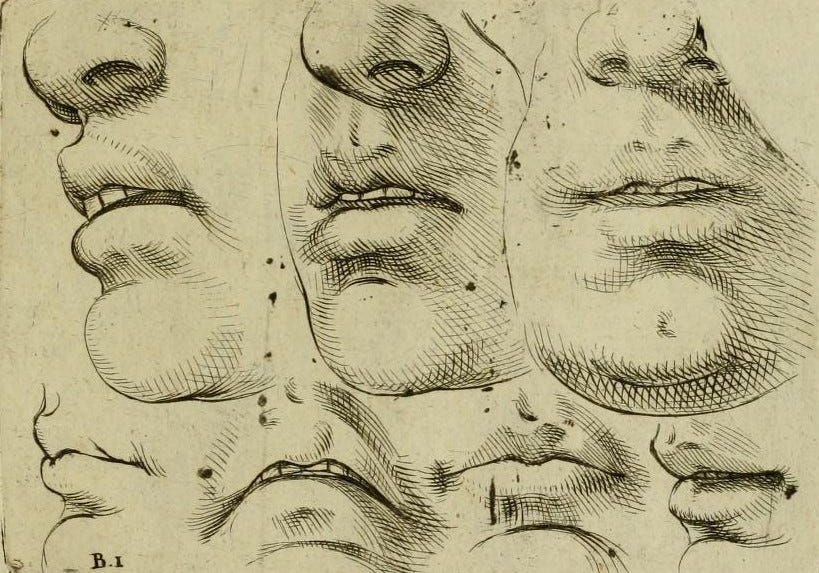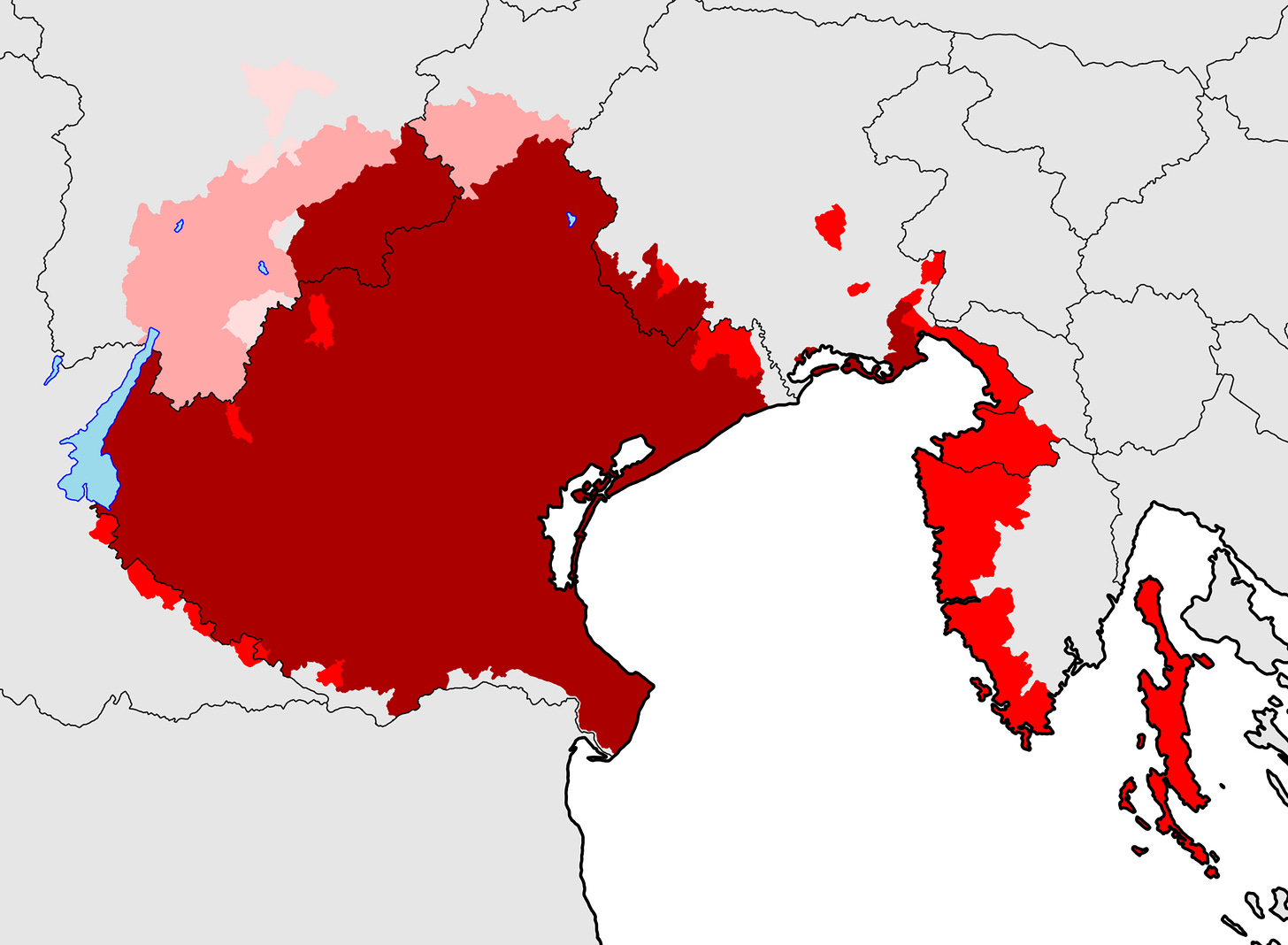A Distinct Western Romance Language
The Venetian language - the Łengua Veneta - is a distinct member of the Western Romance language family, with its own grammar, lexicon, literary tradition, and a syntax that sometimes is more similar to that of English than other romance languages (a topic that will be discussed in a further article).

Unlike Eastern Romance languages such as Italian, Venetian aligns with French, Spanish, and Portuguese, placing it within a broader European tradition. Although it is considered a dialect by the italian state, which dominates the core regions where Venetian is spoken, it is an internationally recognized language with its own ISO-693-3 code, VEC.
Early Origins: The Veronese Riddle and Belumat Rhythm
The roots of Venetian are evident in some of the earliest Western Romance texts, such as the "Veronese Riddle" (Intivareło Veroneze) and the "Belluno Rhythm" (Ritmo Bełumato), dating back to the XII century.
These works offer insight into Venetian's evolution, manifesting a language already distinct from Latin and developing its unique linguistic traits.
During the centuries a wealth of Venetian texts have been written, from simple letters to university books and theatre comedies. The early adoption of the printing press by the Republic of Venice made it one of the main printing centers of Europe, even developing its own font style, the Venetian typeface - which would serve as the basis for the universally adopted Roman type in the XV century.
Influences and Cosmopolitan Development
Venetian developed through centuries of trade, diplomacy, and cultural exchanges across the Mediterranean. This cosmopolitanism led to the adoption of words from Greek, Arabic, and Turkish, which enriched the language’s vocabulary without compromising its core as a Western Romance tongue.
Conversely, Venetian would see its widest adoption at the height of the Republic, being widely spoken across the Eastern Mediterranean - from Venetia itself to the Dalmatian coast and Greece. Its phonology, vocabulary, and literature maintained a unique profile, making it a bridge introducing words from distant lands into Europe -such as Chai Catai, which refers to tea, famously appearing in Ramusio’s works, or its own lexicon - e.g. the word fresco, which later spread to other European languages.

Venetian and Ancient Venetic: Two Different Languages
It is crucial to distinguish Venetian from the ancient Venetic language, as the latter was spoken by the Ancient Veneti before their Romanization, and was a distinct Indo-European language, but not to the Romance lineage of Venetian.
Over time, ancient Venetic was absorbed and replaced by Latin, paving the way for the development of Venetian. Despite sharing a geographical link, the two languages are linguistically unrelated, even if some coincidence can be found, such as the suffix -esto, which in modern Venetian is added to verbs to form the past participle.
English-Venetian similarities: why Venetian should be taught in schools
The Venetian language shares several similarities with English. Some of these are common to other Romance languages, while others uniquely set Venetian apart. Most Venetian speakers are educated in Italian schools, where Italian often lacks features that align with English. This discrepancy makes learning English feel unfamiliar or unnatural to Italian speakers. Teachers often resort to convoluted methods to impart English concepts, typically with poor results (as seen in Italy’s low proficiency in English).
In this section, we will show how teaching English through comparisons with Venetian can make the process more intuitive and effective for native Venetian speakers.
Interrogative inversion
As some may know, French forms questions by placing the clitic pronoun after the verb in interrogative sentences. Venetian employs a similar structure, allowing listeners to recognize questions without relying solely on intonation.
MI SO NDÀ – I HAVE BEEN
SOI NDÀ? – HAVE I BEEN?
TE SI ZVELTO – YOU ARE QUICK
SITO ZVELTO? – ARE YOU QUICK?
This inversion closely mirrors English question structures, making the transition easier for Venetian speakers.
“May” and “Can”
A common error among Romance language speakers is confusing "may" and "can." For instance, in Italian, the verb potere translates both "can" and "may," leading to mistakes like "Can I sit here?" instead of "May I sit here?"
Venetian avoids this confusion by distinguishing between èsar bon de (to be able to) and poder (can). A Venetian speaker naturally uses poder when asking for permission, ensuring greater accuracy in English.
NG Endings
The voiced velar nasal sound /ŋ/ (-NG) is prominent in Venetian word endings. A familiar example is the well-known brand and sports team "Benetton".
In Venetian, all final "N" sounds are pronounced like the English "-NG," simplifying the learning of similar English pronunciations.
TH and DH Sounds
Though not universal across all Venetian dialects, the sounds /θ/ (TH) and /ð/ (DH) are familiar to Venetian speakers. The voiceless dental fricative /θ/ is present in words like thincue (five), while the voiced dental fricative /ð/ appears in words like dhało (yellow).
These examples demonstrate how frequently Venetian speakers encounter these sounds, making it easier for them to pronounce English words accurately.
This article marks the first anniversary of The Third Venetia. We thank you for following us thus far, and renew our commitment to continue bringing our own - Venetian - perspective.









Esełente artìgol, strabel! Ła łengua veneta ła ze stra intaresant e beła.